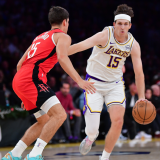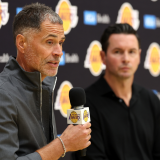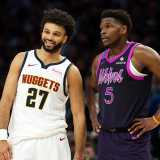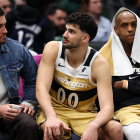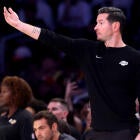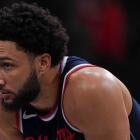
Jodie Meeks' injury leaves Pistons with much younger option
Jodie Meeks will miss eight weeks with a fracture in his lower back. How does Stan Van Gundy replace the outside marksman?

With the news from the Detroit Pistons that Jodie Meeks will miss approximately eight weeks with a stress reaction in his lower back, Stan Van Gundy needs to find a way to replace the shooter in the backcourt. The Pistons signed Meeks to a three-year, $19 million contract following a personally successful season for the guard out of Kentucky. He set career highs in points per game (15.7), rebounds (2.5), assists (1.8), steals (1.4), minutes (33.2), field goal percentage (49.6 percent), 3-point percentage (40.1 percent), and made 3-pointers (162).
The Pistons probably weren't looking to feature him as much as he was featured with the Lakers last season, but he was going to be a key cog in Van Gundy's perimeter-oriented attack that was so successful in Orlando. The closest comparison for what you may find in assuming the way Meeks could be used under Van Gundy is perhaps J.J. Redick. While Meeks isn't the shooter or player that Redick has been over the course of his career, the similarities are closer than you'd imagine.
You'd have to look at Meeks' year with the Lakers in comparison to Redick's final season under Van Gundy in 2011-12. In that lockout-shortened season, Redick was the starting 2-guard for the Magic and was instrumental in how the offense spread the floor. Redick was fantastic moving without the ball and was very smart at finding open pockets in the defense on the perimeter to occupy for kickouts from the middle.
That season, Redick made 41.8 percent of his shots from outside while averaging 15.3 points per 36 minutes. Last season for the Lakers, Meeks made 40.1 percent of his 3's while averaging 17.0 points per 36 minutes. You can see the similarities in the Basketball-Reference.com Heat Maps for each player's shooting and scoring:
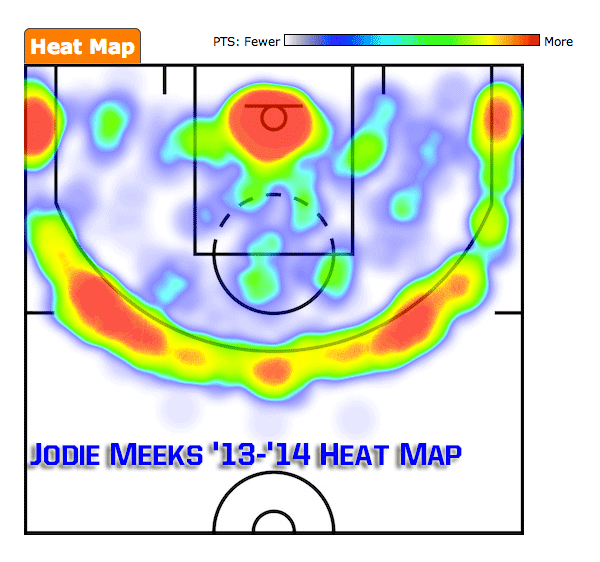
Redick worked his way inside the 3-point line a lot more when he was run off by aggressive closeouts and wasn't afraid to take that one-dribble, pull-up jumper. Meeks was much more 3-point oriented, but you see similar pockets of red zones around the arc between him and Redick.
The Pistons won't have this type of shooter for at least two months. And it will be tough to gauge just how quickly Meeks can get into game shape and be back to the 3-point marksman we saw last season, if in fact that increased volume of shooting and accuracy weren't just outliers for what Meeks is capable of doing. With Meeks out of commission for now, Van Gundy's easiest option is calling upon second year shooting guard Kentavious Caldwell-Pope to fill that role.
Caldwell-Pope had a scare this past weekend with a sprained knee, but the MRI showed muscle irritation and zero long-term concerns. Assuming he's just a week of rest away from being right back out on the court, can the No. 8 pick in the 2013 NBA Draft end up being the stopgap solution or even the long-term answer to what Van Gundy needs in the backcourt next to Brandon Jennings?
KCP played in 80 games for the Pistons in his rookie campaign and started 41 games. He only managed to stay on the court for 19.8 minutes per game, possibly due to a rookie not being able to overcome the typical rookie woes while also shooting just 39.6 percent from the field and 31.9 percent from downtown. However, his skill set suggests those are not typical percentages to expect from him. He was a good scorer in college and has a good shooting stroke. He just needs to find consistency in his shot selection and release points on the court.
In Van Gundy's final season in Orlando, his team was great from 3-point range and especially deadly from the corners. The Magic were 11th in 3-point percentage from the left corner at 38.8 percent and 3rd in the league from the right corner at 44.2 percent. Van Gundy's teams utilized those corners quite proficiently, and you'd imagine that will be a point of emphasis again as they attempt to space the floor for their overall attack.
This is where KCP's troublesome shooting as a rookie can actually become successful. Even though he struggled from 3-point range as a rookie, he was pretty good from the corners. He made 14-of-35 (40.0 percent) from the left corner and 12-of-32 (37.5 percent) from the right corner. His discomfort or lack of success shooting 3's came above the break on the left wing (21.6 percent) and top of the arc (31.6 percent). He was decent on the right wing at 34.1 percent).
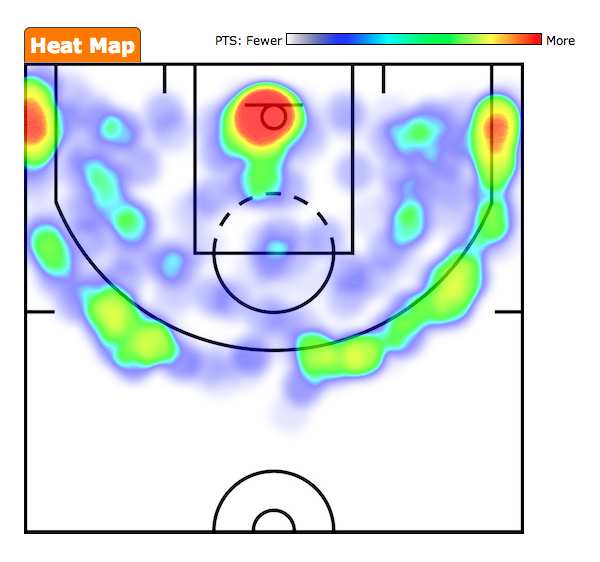
Caldwell-Pope will have to be better attacking the basket, as he figures out how to use strength and athleticism to finish through contact or draw the foul. Being able to attack off the dribble consistently on hard closeouts can certainly factor into him getting better driving lanes and angles against a scrambling defense as they cover the perimeter options. And you create those aggressive closeouts by knocking down 3's.
The corner opportunities will be there for him and he'll have to knock them down. He's also going to have to be more comfortable with that deeper shot above the break. If KCP can't knock down these opportunities (and play decent defense for Van Gundy on the perimeter in the process), then we'll see the Pistons' coach get more creative and bold with bigger lineups. That would involve Caron Butler, Kyle Singler, or even Jonas Jerebko trying to defend the perimeter and provide the offense and outside shooting Van Gundy craves for his attack.
The transition period from the doldrums of Joe Dumars' final days running this team to an expected playoff appearance annually isn't expected to happen right away. However, the possibility is there with Van Gundy coaching a roster with serviceable talent and an Easter Conference that is stronger but not too strong to be too exclusive to see the Pistons in the postseason in 2015. With Meeks down and the depth chart of shooting guards on the Pistons relatively thin, Caldwell-Pope's best opportunity to impress his new coach is here.


